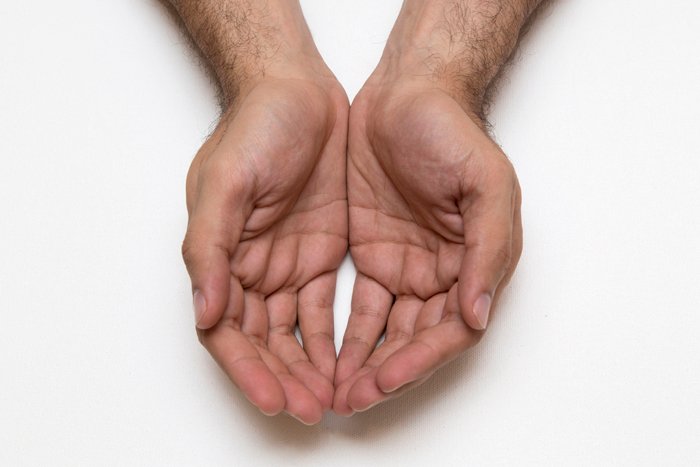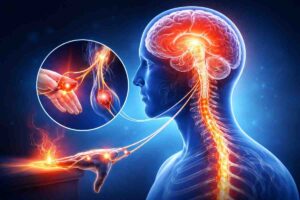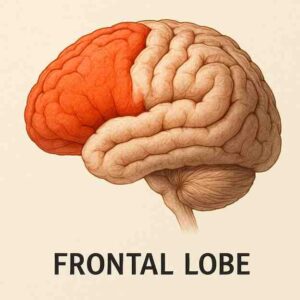Having met patients with different kinds of hand tremors, the surgeon explains why astute judgment is necessary to identify and diagnose problems concerning the human hand

“I have a tremor in my hands,” Meenaben Shah explained as she stretched out both her arms in front of me and showed me her fingers gently and rhythmically twitching away as if she were playing a piano badly. She was a middle-aged Jain homemaker in her late fifties. “When I have a cup of tea, my hands shake; when I’m stitching, I have a problem,” she continued in Gujarati. “When I’m cooking and cleaning, it’s alright,” she added, “but when my husband gives me stress, it increases,” she said looking at him with a hint of a smile.
I examined the tone in her limbs to ensure it wasn’t rigid. Her hands were supple. There was no arthritis. Her grip was strong. She had impeccable sensations. “This is called an essential tremor,” I explained, “and it’s not Parkinson’s, which is what most people fear when they start shaking a little. Oftentimes, it’s seen in the family, but this is nothing to worry about,” I comforted her. “Do you drink?” I asked her straightforwardly, but the response I got was as though I had committed blasphemy. She crisscrossed her palms over her cheeks and pulled her tongue out and said “Tauba, tauba!” as if I had invoked the devil. “I’m asking not because alcohol causes your hands to shake, but a small amount of daaru is the prescribed treatment for this tremor,” I shocked her with a broad smile. “Give her problem to me, I will solve it,” her husband suggested, adding, “Just because we’re vegetarian doesn’t mean we cannot drink!” to justify his stance. I wrote her some medication and asked her to see me in a month. “If this doesn’t work, we have a few other modalities we can try,” I told them as they left.
Surprisingly around the same time, I saw another lady, an architect and designer, with exactly the same problem but only affected on her right side. “My hand has this wired tremor; it’s as if I don’t have control over my movements. It’s jerky and unsteady.” I got her to stretch out her arms and the right one drifted away with the hand curling up with some abnormal writhing. “I was told that this is an essential tremor and nothing needs to be done, but I should see you just in case,” she clarified. I looked at her and said, “I’m glad you took the ‘just in case’ option because this is not an essential tremor.” We got an urgent MRI of the brain to find a tumour sitting in her left thalamus and the areas around it responsible for movement. The next day, under general anaesthesia and using computer navigation to guide us, we made a hole in her head and took a biopsy of the tumour. It turned out to be a lymphoma that melted with a few cycles of chemotherapy, and her abnormal movements vanished. She was back to drawing straight lines without the aid of a ruler, moulding clay, and making buildings.
I couldn’t help recalling the vintage classic by John Napier simply titled Hands. Originally published in 1980, Napier blends science and storytelling, observing keenly that ‘the hand at rest is beautiful in its tranquillity, but is infinitely more appealing in the flow of action.’ As a surgeon, nothing makes more sense than this.
“I have severe pain in the left hand that I just feel like shaking off all the time,” another lady came to me. She was a stenographer. “The pain zaps up and down the wrist and I’ve begun to notice numbness in my first four fingers.” “Do you have any pain in the neck going down your arm?” I asked, because sometimes, this pain can be caused by a pinched nerve in the neck. “No,” she ascertained. “So then, in all likelihood, you have carpal tunnel syndrome,” I decreed. “I know. I’ve tried medication, wearing a splint, stopping my work, but nothing’s helped. I need a new hand,” she begged.
We confirmed the diagnosis with a nerve conduction test. We ensured that she didn’t have diabetes because diabetic neuropathy can also cause pain and burning in the hands, but often it’s in both hands and the feet. We imaged her cervical spine to confirm there was no compression. A few days later, we took her to the operating room and made a small cut over her wrist, slicing the fascia that had entrapped the nerve and freeing it up completely. I wrapped up the hand in a roller bandage and tied a red ribbon round it, as if it was a gift and that I was presenting her new hand to her. She was completely pain free. It was the best present she had ever received, she said.
In that bizarre week, I saw another man who came to me with a wrist drop. One morning when he awoke, he could simply not extend his wrist, something as simple as what bikers do to rev the accelerator of their vehicle. He was a high-functioning lawyer, unable to come to terms that something so strange could happen to him. The look on his face was just as numb as his hand. “You must have slept wrongly or there may be a mild viral infection of the nerve causing this or diabetes,” I tried to explain. In all honesty, no one quite understands why this happens. On closely examining him, he had a powerless grip, and while his elbow extension was faint as well, the rest of his arm had good strength. An MRI of the brain ruled out a stroke. “You have a radial nerve palsy,” I told him. “We’ll give you a one-week course of steroids and you’ll be fine,” I pronounced, having learnt about that magic potion from my neurologist. This is exactly what happened, and the next time I saw him, he was beaming. It reminded me of Napier again, who, in his captivating edification, writes, ‘when the hand is at rest, the face is at rest; but a lively hand is the product of a lively mind.’
The human hand is one of the most complex and fascinating anatomical structures we possess. Its dysfunction can result from myriad conditions affecting the brain and spine or the nerves that emanate from it. It can also be a local problem of the bones, joints, muscles, and ligaments. It requires astute judgement to identify the problems that nature alone will heal and the ones we need to aggressively implement a cure for. Each hand has 27 bones and 30 muscles. Hands have the largest area dedicated to them within the brain compared to other body parts.
Our hands are an important part of who we are and how we see ourselves. What we do with them gives us our identity. Holding someone’s hand eases pain, provides comfort, and establishes connection. According to Tiffany Field, director of the Touch Research Institute, ‘holding hands stimulates the vagus nerve, which decreases blood pressure and heart rate and puts people in a more relaxed state.’ Hands have a profound power to heal. If you watched Lady Gaga perform ‘Hold My Hand’ at the Oscars last week, you’ll understand what I mean.
Meenaben came back a month later with her husband. “My tremor is almost gone,” she told me happily. “I can do everything I want to without being bothered by it!” she confirmed. We exchanged pleasantries, and just as they left, she peeked back into my office and shyly confessed. “I did try the daaru you suggested, and I think it worked more than the medicines,” she tiptoed away.




